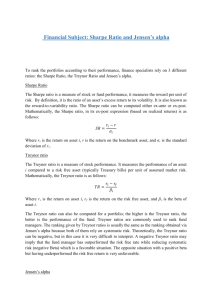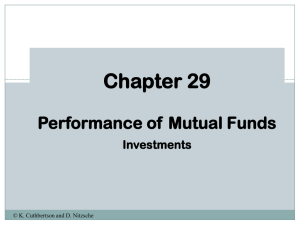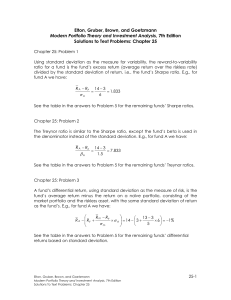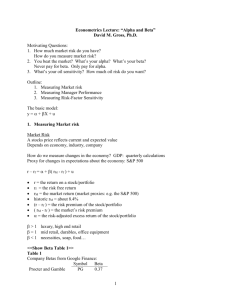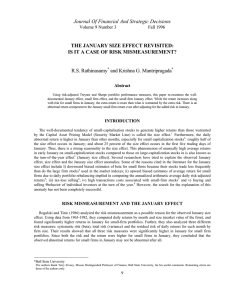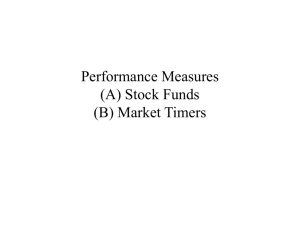Description of the Measure
advertisement
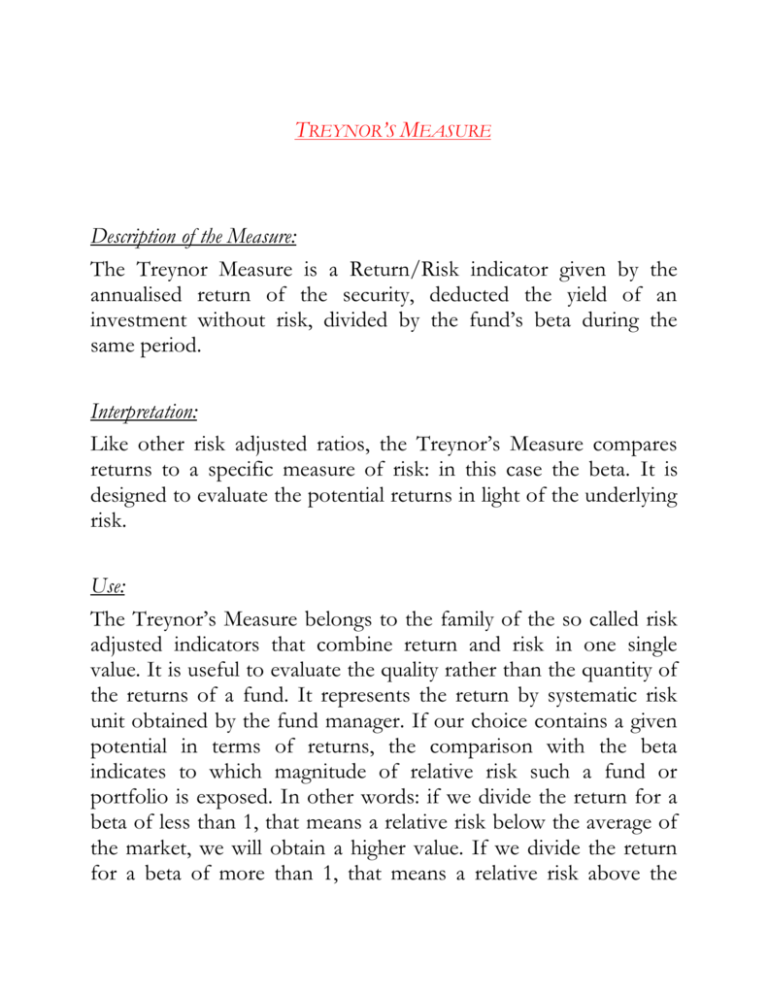
TREYNOR’S MEASURE Description of the Measure: The Treynor Measure is a Return/Risk indicator given by the annualised return of the security, deducted the yield of an investment without risk, divided by the fund’s beta during the same period. Interpretation: Like other risk adjusted ratios, the Treynor’s Measure compares returns to a specific measure of risk: in this case the beta. It is designed to evaluate the potential returns in light of the underlying risk. Use: The Treynor’s Measure belongs to the family of the so called risk adjusted indicators that combine return and risk in one single value. It is useful to evaluate the quality rather than the quantity of the returns of a fund. It represents the return by systematic risk unit obtained by the fund manager. If our choice contains a given potential in terms of returns, the comparison with the beta indicates to which magnitude of relative risk such a fund or portfolio is exposed. In other words: if we divide the return for a beta of less than 1, that means a relative risk below the average of the market, we will obtain a higher value. If we divide the return for a beta of more than 1, that means a relative risk above the average of the market, we will obtain a lower value. If beta is just 1, that means a risk in line with the market, then the reading for Treynor’s Measure will be the same as the return. The highest the reading of the indicator, the better the quality of the returns on a relative Reward/Risk basis. Potential Misuse: As in the case of Jensen’s Alpha, the validity of this measure depends crucially on the hypothesis that the beta of the fund is stationary, i.e. that the manager of the fund does not adapt his/her portfolio’s weight according to his/her expectation on the future market variations. The validity of this hypothesis has to be tested before focusing on the value of this indicator. It also relies on the accuracy of the proxy chosen for representing the market portfolio. Formula: T p ,t Et R p,t R f ̂ p where: Et R p,t is the annualized mean return on the fund considered over period; R f is a proxy for the riskless rate; ̂ p is the estimated sensitivity of the fund return to the benchmark variations. Two year data of weekly series is considered. References: Jobson J. and B. Korkie, (1981), “Performance Hypothesis Testing with Sharpe and Treynor Measures”, Journal of Finance 36, Septembre 1981, 889-908. Treynor J., (1965), « How to Rate Management of Investment Funds », Harvard Business Review, January-February 1965, 63-75.
